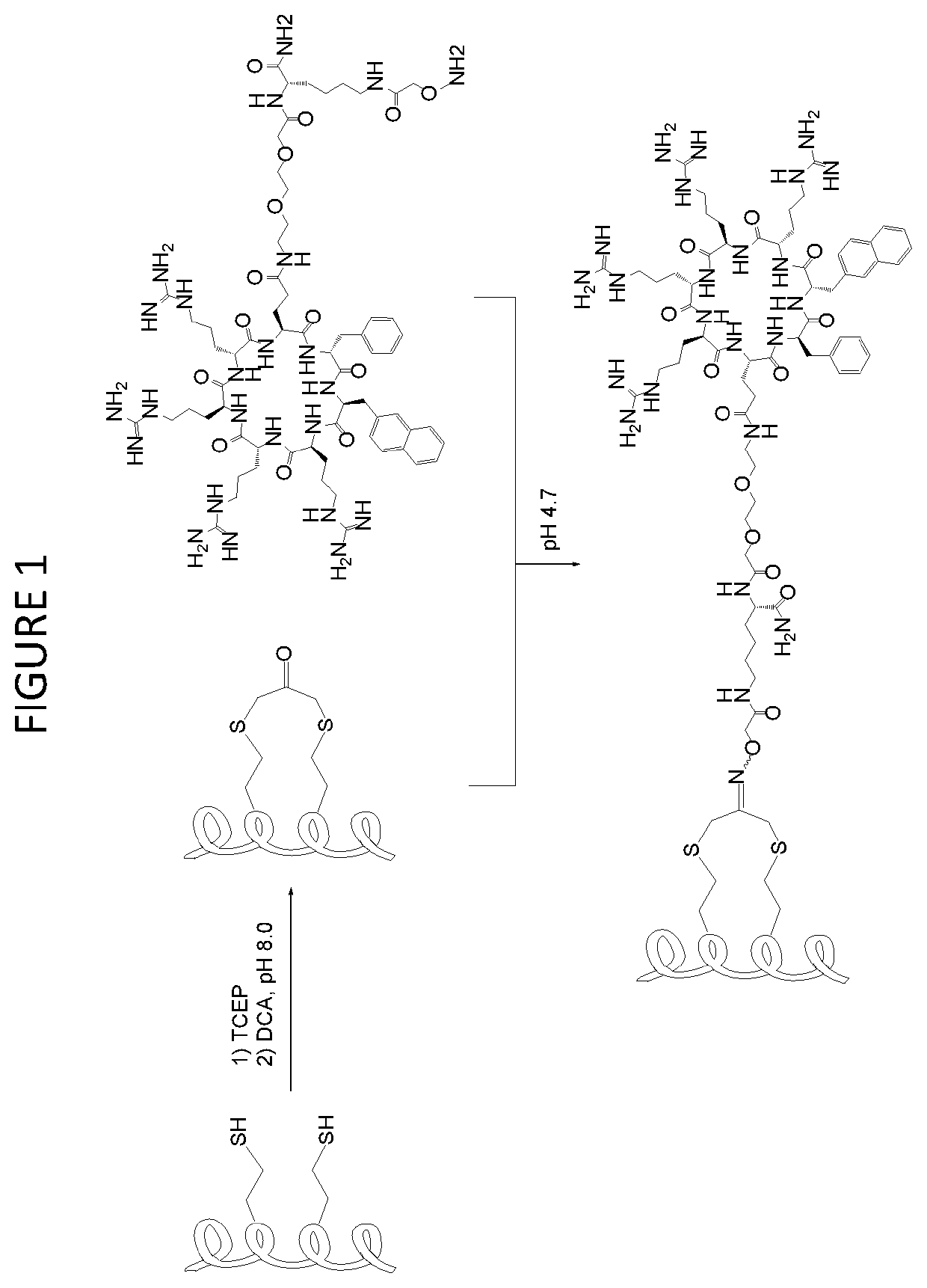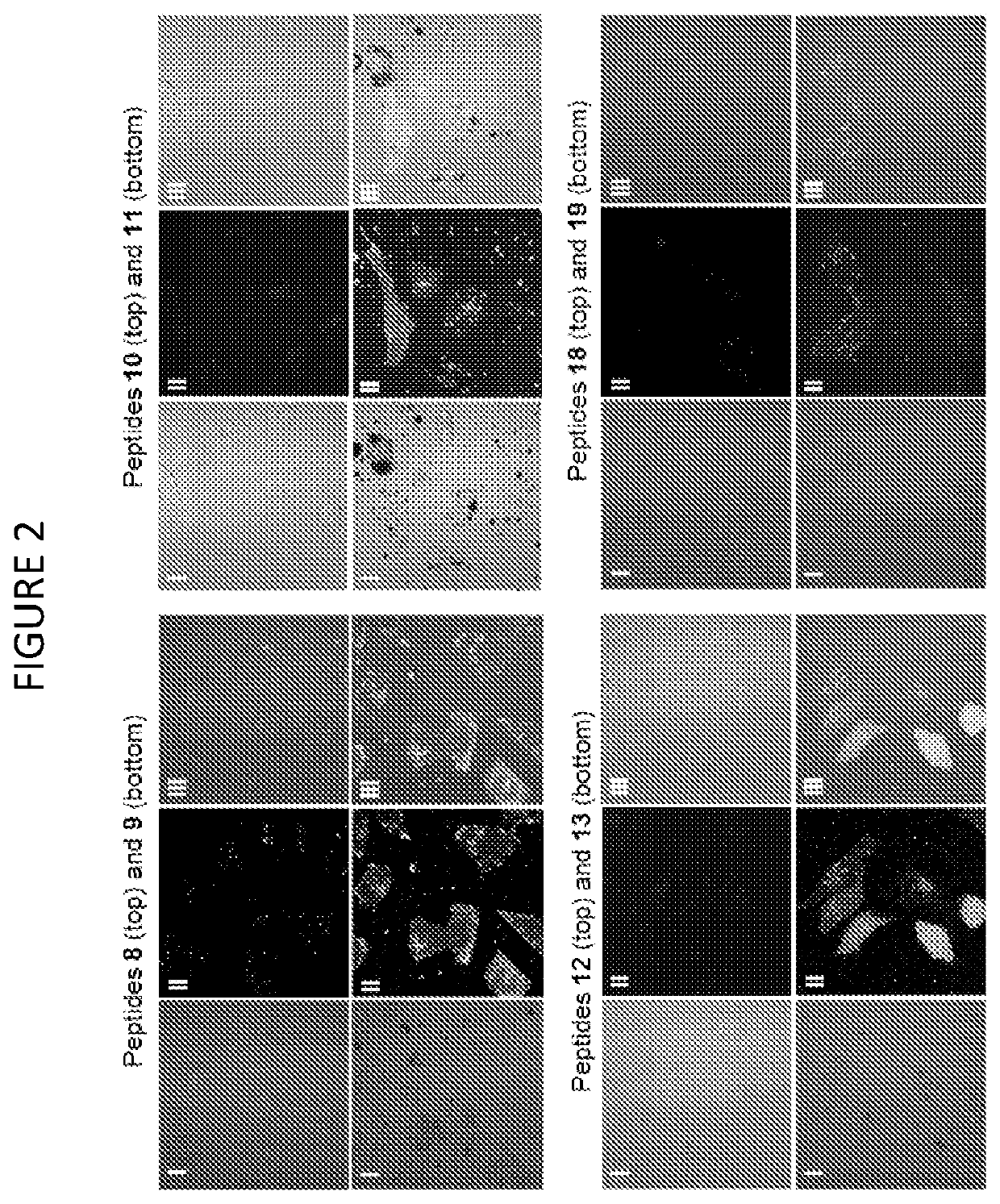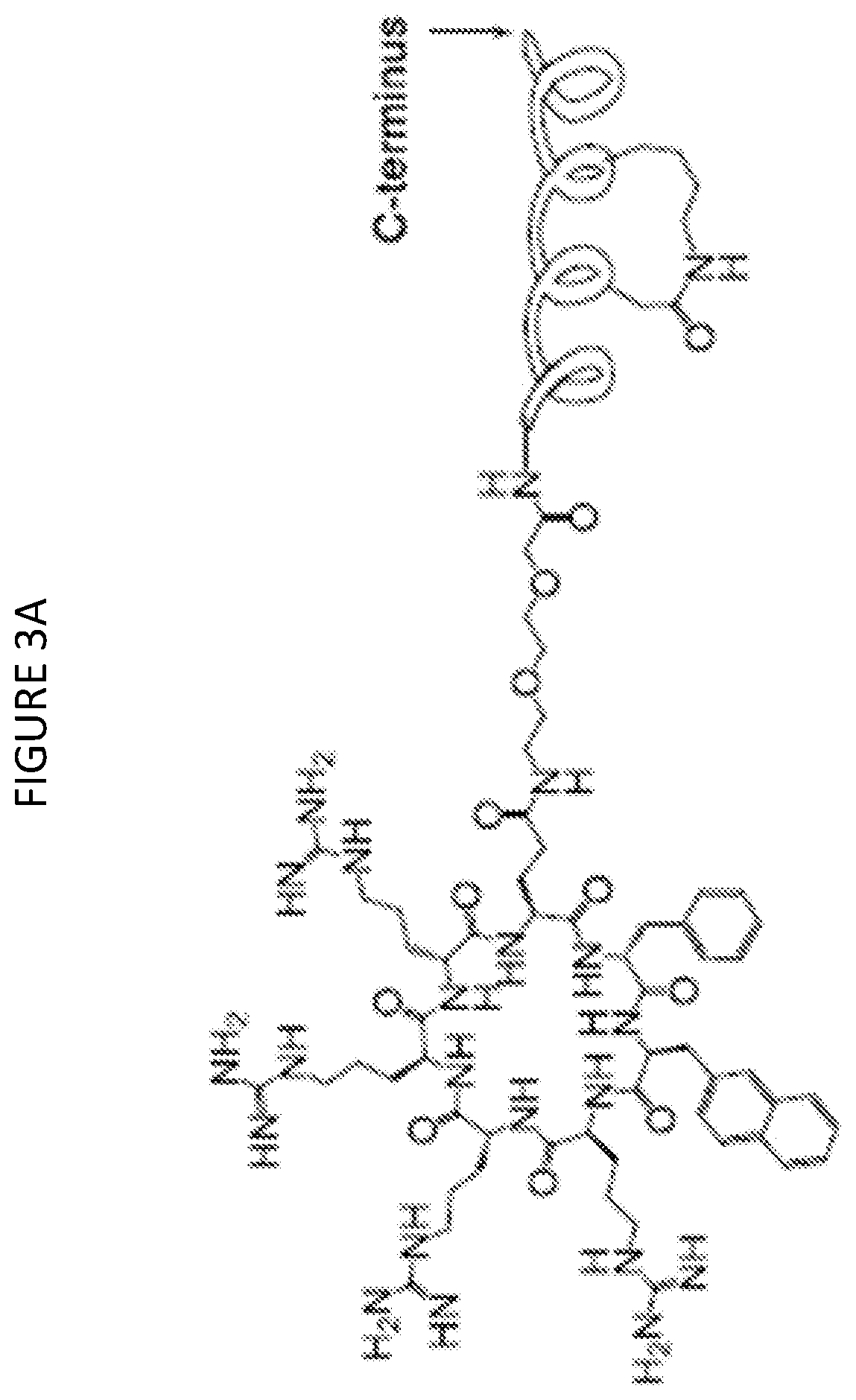Stapled beta-catenin ligands
a beta-catenin and ligand technology, applied in the field of polypeptide conju, can solve the problems of limited translational success, direct small-molecule inhibitors, and the design of stapled peptides with consistent cell-permeability remains a major challeng
- Summary
- Abstract
- Description
- Claims
- Application Information
AI Technical Summary
Benefits of technology
Problems solved by technology
Method used
Image
Examples
example 1
rategy and Synthesis of Cyclic CPP-Stapled Peptide Conjugates
[0250]We prepared CPP-stapled peptide conjugates by using a convergent synthesis method (FIG. 1). First, the cargo peptide was synthesized by standard solid-phase peptide synthesis (SPPS) with two homocysteine residues incorporated at the i and i+4 positions. After cleavage from the resin and side-chain deprotection, the peptide was treated with 1.5 equivalents of 1,3-dichloroacetone (DCA) to staple the peptide into an alpha-helical conformation. This stapling procedure also incorporates a ketone group into the stapled peptide for subsequent bioorthogonal conjugation with a cCPP. Next, a cCPP [e.g., cCPP9] was synthesized by SPPS with a miniPEG-Lys(Mtt) linker attached to the Gln side chain. While still on resin, the Mtt group on the Lys side chain was selectively removed by treatment with 5% trifluoroacetic acid (TFA) and the exposed amine was acylated with a Boc-aminoxyacetyl moiety. Cleavage from resin and side chain de...
example 2
eable Stapled Peptides Against β-Catenin-TCF Interaction
[0251]A cell permeable stapled peptide against the β-Catenin-TCF interaction was synthesized. An m-xylene stapled peptidyl inhibitor, FAM-GGYPECILDCHLQRVIL-NH2 (SEQ ID NO: 120), which has high affinity for β-Catenin (KD=18 nM) was chosen (peptide 1, Table 7) and further modified. The two cysteine residues were replaced with aspartic acid and lysine and the m-xylene staple with a DK staple. The N-terminal FAM dye was also removed to increase the aqueous solubility and the resulting peptide, i.e. peptide 2 (Table 7), was conjugated to cyclic cCPP9 at its C-terminus via a (miniPEG)2 linker. Analysis of the binding mode through molecular dynamics indicated that C-terminal conjugation resulted in minimal disruption of the productive binding conformation with cCPP9 extended into the solvent (FIG. 3C). In an FP-based competition assay, peptide 2 bound to β-Catenin with an IC50 value of 152±8 nM (FIG. 7). A negative control peptide (pe...
example 3
tapling and Conjugation with a KD Staple
[0261]The main limitation of the oxime-based conjugation method is the formation of two different stereoisomers, which complicates product isolation and further clinical development. To overcome this limitation, a lactam linker formed by the side chains of a lysine / aspartate pair at the i and i+4 positions (KD staple) was employed. Previous studies have shown that the KD staple results in consistently higher α-helicity for stapled peptides than other commonly used staples. The staple is also more hydrophilic than other staples (e.g., all hydrocarbon staple), improving the aqueous solubility of the stapled peptides. See Shepherd, N. E.; Hoang, H. N.; Abbenante, G.; Fairlie, D. P. Single Turn Peptide Alpha Helices with Exceptional Stability in Water. J. Am. Chem. Soc. 2005, 127, 2974-2983. Peptides containing the KD staple were synthesized by solid-phase peptide synthesis. Peptides containing the KD staple can be conjugated to the CPP at its N-t...
PUM
| Property | Measurement | Unit |
|---|---|---|
| Fraction | aaaaa | aaaaa |
| Fraction | aaaaa | aaaaa |
| Fraction | aaaaa | aaaaa |
Abstract
Description
Claims
Application Information
 Login to View More
Login to View More - R&D
- Intellectual Property
- Life Sciences
- Materials
- Tech Scout
- Unparalleled Data Quality
- Higher Quality Content
- 60% Fewer Hallucinations
Browse by: Latest US Patents, China's latest patents, Technical Efficacy Thesaurus, Application Domain, Technology Topic, Popular Technical Reports.
© 2025 PatSnap. All rights reserved.Legal|Privacy policy|Modern Slavery Act Transparency Statement|Sitemap|About US| Contact US: help@patsnap.com



